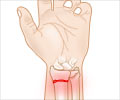Young athletes who undergo a high-intensity mechanical strain may develop Bone marrow edema in the lower spine. Bone marrow edema or the accumulation of excess fluid in bone marrow can lead to an inflammatory process.

‘Young athletes commonly accumulate excess fluid in the bone marrow around the joints after intense training.’





Magnetic resonance imaging (MRI) can detect bone marrow edema and structural changes in the sacroiliac joint when patients begin to experience pain, but there is an ongoing debate about what constitutes a positive MRI for the diagnosis of axial SpA early in the course of the disease.To provide some clarity, Ulrich Weber, MD, a researcher at King Christian 10th Hospital for Rheumatic Diseases in Gråsten, Denmark, and his colleagues conducted a study of 20 recreational runners and 22 professional ice hockey players to determine the frequency of bone marrow edema and its distribution across eight regions of the sacroiliac joint. The runners received MRI scans of their sacroiliac joints before and 24 hours after a 6.2-km competitive run, and the hockey players received scans at the end of their competitive season.
The average number of sacroiliac joint quadrants showing bone marrow edema in the healthy runners was 3.1 before and after running, and 3.6 in the hockey players. The posterior lower ilium was the most affected region, followed by the anterior upper sacrum.
"Our study in individuals experiencing a broad span of mechanical strain intensity to the axial skeleton contributes several issues to refine a definition of about what constitutes a positive lesion signature on sacroiliac joint MRI," said Dr. Weber.
"Limited specificity of sacroiliac joint bone marrow edema is highlighted by the study finding that one out of three healthy athletes would meet the currently most widely applied classification criteria for SpA based solely on bone marrow edema. This has impacts concerning where to set the threshold for between normal variation and disease." Dr. Weber noted that the finding that edema occurs in two anatomical regions of the sacroiliac joint in healthy individuals is also noteworthy.
Advertisement
Source-Eurekalert















